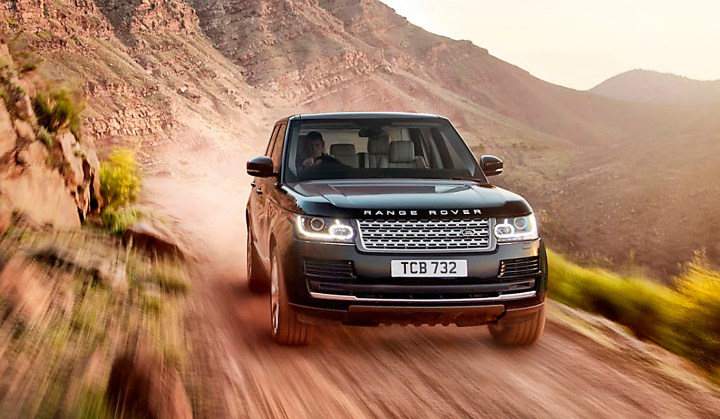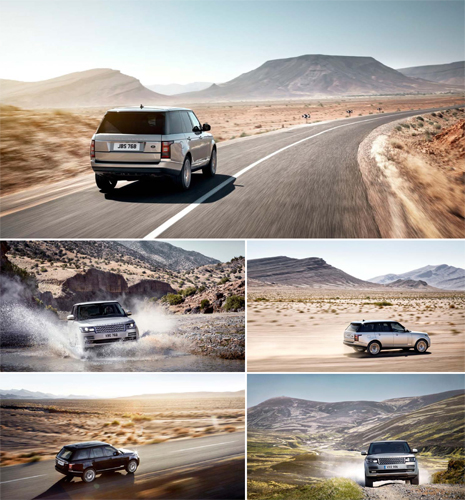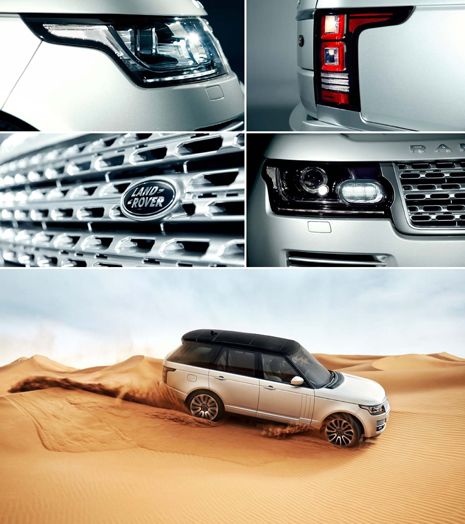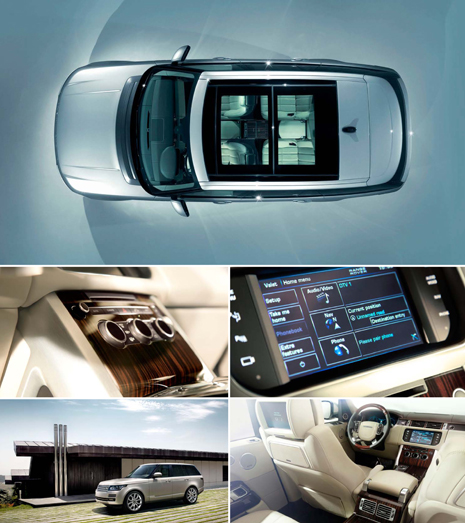Maverick Life
New Range Rover: A heavyweight treading lightly

Sport utility vehicles may be favoured by South African motorists, but they’re not exactly in the planet-saving category. In fact, the bigger they are, the naughtier they get from an environmental perspective. Which is why Land Rover’s new Range Rover has had to undergo a radical slimming programme. By DEON SCHOEMAN.
In the sports utility vehicle universe, there are small 4x4s, compact softroaders, beefy all-terrainers – and then there are the real 4×4 juggernauts. The now defunct Hummer was indisputably the brashest, most ostentatious expression of that segment, but the Range Rover has always been considered the only real aristocrat in a segment of bundu-bashing bruisers.
Perhaps it’s the vehicle’s glossy veneer of stiff-upper-lip sophistication that has set it apart from the rest. Or maybe it’s been the Range Rover’s ability to combine the wood-and-leather luxury of upper-crust motoring with true, sleeves-rolled-up 4×4 talent that has endeared it to successive generations of well-heeled 4×4 fans.
After four decades, the Range Rover is as much a 4×4 institution as its even more illustrious stable mate, the immortal Defender. But while the Defender is the epitome of pared-down utility, the Range Rover has always pioneered new technologies in an effort to lead the 4×4 pack – with increasingly lavish luxury to match.
Range Rover buyers are a conservative bunch. They don’t mind that their vehicle of choice is a boxy, bulky bully of a machine that’s about as streamlined as a brick. They enjoy the way it swaggers through traffic with the same regal ease it displays when ploughing through a muddy donga, or racing up a Namibian dune.
Most of all, Range Rover owners don’t like change. Not for them the sleeker, sculpted lines of the Evoque (even though this lifestyle 4×4 has been badged a Range Rover as a confirmation of its premium positioning). And so, the 2013 Range Rover, revealed only weeks ago, and due to go on sale next year, looks, well, like a Range Rover.

OK, so we know that this fourth-generation Range Rover bucks the trend by not upsizing – but then, its predecessor was hardly compact to begin with. We also know that the edges of that boxy silhouette have been smoothed and fettled to allow a smoother airflow above, below and around the big SUV.
Even the roofline has been gently tapered towards the rear in the interests of an aerodynamic efficiency, and the filigreed grille has been mounted at a more rakish angle. However, the all-new Range Rover remains instantly, unequivocally recognisable. The more things change, the more they stay the same!
The Range Rover retains many of its traditional visual characteristics: the angular lines and the upright stance, the short front overhang, the extended rear, and the pronounced glass house that affords its occupants an unobstructed view of the surroundings.
But while the Range Rover template has been left largely unchanged, the details all express an altogether more contemporary design. The headlights have an almost sci-fi stare, with multiple elements, LED daytime running lights and clear fairings contributing to the vehicle’s resolute expression.
Not surprisingly, the rear tail light clusters show a similar design approach, with the vertical array showcasing squared elements, while a curved extension adds some visual flair. The rear tailgate is still split into two parts, both of which are motorised in the interests of hands-free convenience.

So, while it looks cleaner and smoother, there’s much that’s simply tried-and-trusted Range Rover. You need to dig below that shiny metal skin to find the innovation at the core of the newcomer. And it all revolves around weight.
The new Range Rover weighs 420 kg less than its predecessor. That’s the equivalent of five well-nourished South Africans, or 21 bags of potatoes, or 25 cases of classy Shiraz from the Hemel-en-Aarde Valley.
The weight reduction regimen includes more extensive use of high-strength, lightweight aluminium for the chassis, the all-new air suspension system and key drivetrain parts, as well as selective incorporation of composites. Even the brake callipers and the 19-inch wheels have been lightened.
The combination of a significantly lower mass and a shape that, for all its angularity, is slipperier than its predecessor, results in a more efficient package, with commensurate gains in fuel efficiency.
This is further boosted by a choice of petrol and turbodiesel engines that have been optimised for improved efficiency and a reduced thirst for fuel.
As one would expect of a latest-generation vehicle, there is an extensive array of fuel-saving systems, including stop/start, regenerative charging, low-friction engine components. Even the viscosity of the fluids has been reduced.
In fact, Land Rover is eager to point out that the Range Rover isn’t nearly the bunny hugger’s nightmare it’s made out to be. Extensive use of recycled materials and an energy-saving manufacturing process contribute to a much smaller carbon footprint than one would associate with a big and powerful all-terrainer.
That said, there is nothing spartan about the new Range Rover’s interior. The spacious cabin is lavishly executed in a combination of genuine hide and wood veneers, with metallic accents adding to a sense of contemporary style.

While the space is neither old-school nor stuffy, it does tip a hat to the Range Rover heritage, while also establishing a newer, fresher template for interior design. High-resolution displays become the primary interfaces between the Range Rover and its driver, while conventional rotary controls provide some reassuringly tactile interaction.
For those whose idea of fun is to crawl along some remote and virtually impassable trail in low-range, the good news is that the new Range Rover promises to continue its reputation for being one of the world’s most sophisticated off-roaders.
The latest version of Land Rover’s Terrain Response system makes it even easier for the novice to conquer off-road challenges by automatically and seamlessly switching between one of five driving modes.
Similarly, ride height is now automatically adjusted to best suit driving conditions in off-road mode, selecting between either 40 mm or 75 mm settings, depending on how rough the terrain is.
An astonishing wading depth of 900 mm, one of the best 4×4 drivetrains in the business, adjustable air suspension, electronic traction control, a low-range transfer case, and that intuitive Terrain Response system all ensure a level of off-road capability that is hard to associate with such a luxurious vehicle.
However, there is a caveat: all that technological sophistication may prove to be a significant handicap if you break down in some remote backwater and find that you need more than a pair of pliers, a shifting spanner and a roll of duct tape to get the behemoth mobile again.
Not that everyone wants to retrace Dr Livingstone’s African odysseys behind the wheel of their Range Rover. Despite its off-roading potential, not too many of these aristocrats will ever get to taste anything more challenging than a shopping mall kerb or some game reserve gravel.
In that respect, a raft of high-tech driver assistance and active safety systems ensure swift and safe progress, almost regardless of the conditions. Adaptive cruise control, intelligent emergency braking, blind spot monitoring, closing vehicle sensing and reverse traffic detection are only some of the high-tech systems that provide a futuristic hand.
On-road performance should be effortless, thanks to an eight-speed auto gearbox, linked to a choice of four engines: two turbodiesels, a direct-injection V8 petrol and a supercharged version of the same. Even the so-called entry-level 3.0-litre TDV6 is good for 190 kW and 600 Nm, while the 4.4-litre SDV8 boasts 250 kW and 700 Nm.
For those seeking the silkier refinement of a petrol V8, the 276 kW normally aspirated V8 is one of two options. Its supercharged sibling is rated at a mind-boggling 380 kW, allowing it to outpace many a thoroughbred sports car on tar, while still conquering the rough stuff with disdainful ease.
For instance, the 0-100 km/h dash will stop the clocks in less than 5.5 seconds. Top speed is governed to 250 km/h, making this Range Rover the fastest ever. And yet, the Land Rover development team has also managed to reduce exhaust emissions and fuel consumption across the board.
All of this might make the new off-roader the swiftest, safest, sleekest – and greenest – Range Rover ever. But it’s certainly no green machine in absolute terms. The range-topping V8 Supercharged still slugs down unleaded at a rate of almost 14 litres/100 km in mixed conditions (and a lot more when you’re giving it welly), while pumping out 322 g of CO2 for every kilometre covered.
For exactly that reason, Land Rover plans to launch a hybrid version of its formidable all-terrainer, which will bring those thirsty stats down to the kind of levels even eco-activists may find palatable.
Not that your average Range Rover buyer will be too concerned about saving the planet. DM
KEY STATS
Range Rover 5.0 V8 Supercharged
Engine
4,999 cc V8, supercharged
Gearbox
Eight-speed automatic
Power
375 kW @ 6,000 rpm
Torque
625 Nm @ 2,500 rpm
0-100 km/h
5.4 seconds
Top speed
224 km/h
Fuel consumption
13.8 l/100 km (combined)
Carbon dioxide emissions
322 g/km
Retail price
TBA

















 Become an Insider
Become an Insider